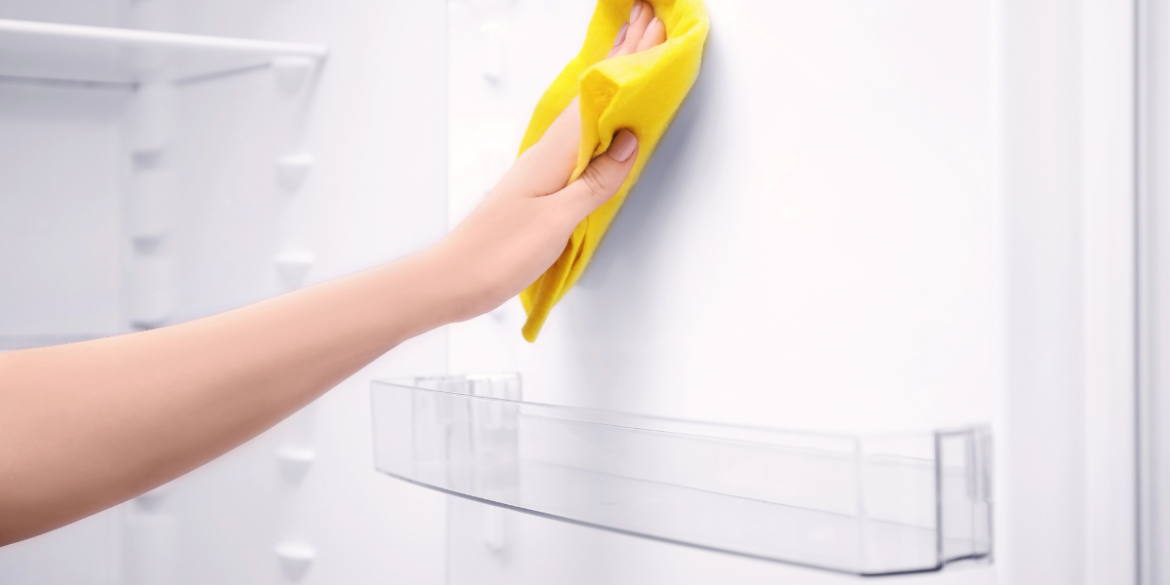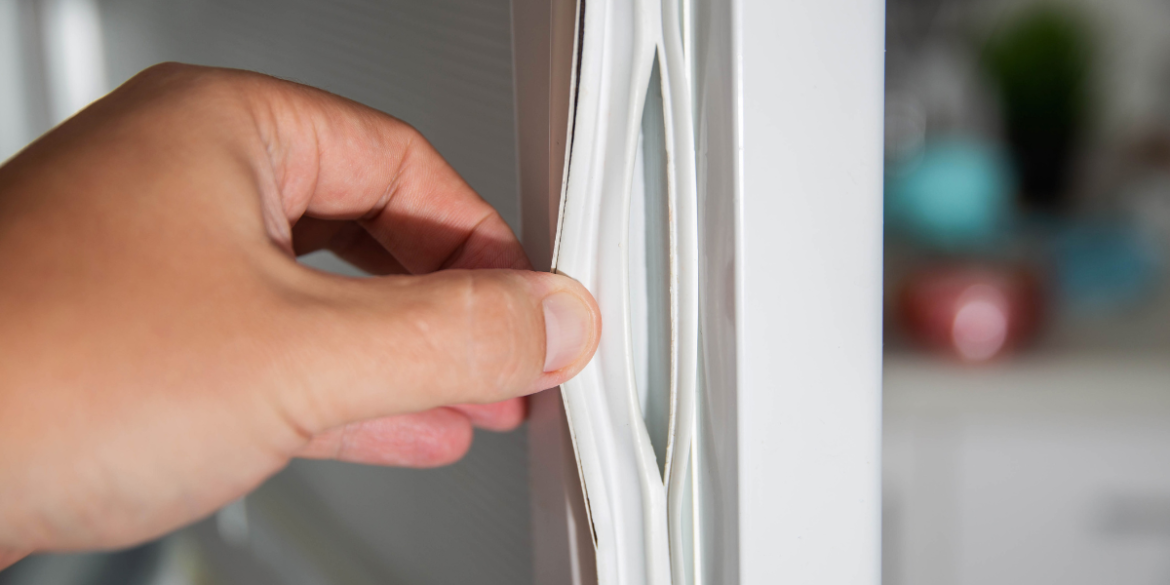Cleaning
How to clean mold out of a fridge
Mold is a common problem in refrigerators and can be a major headache if not dealt with properly. Mold must be dealt with promptly and efficiently to avoid health problems. If you notice a musty smell, visible growth, or fungus spots in your refrigerator, it may indicate the presence of mold. So what do you do next? Cleaning up mold doesn’t have to be intimidating; we’ll walk you through the entire process step by step. This guide will show you how to clean mold out of a fridge in five simple steps.

Why is my refrigerator moldy?
Mold growth in your refrigerator may be due to high humidity, warm temperatures, food spills, or poor ventilation. This can be the result of overstocking, not leaving enough space between items for proper air circulation, or having a fridge that isn’t sealed properly.
Can a moldy fridge be saved?
Yes, a moldy fridge can be saved in most cases. You will need to take a few steps to help repair and clean the affected area. But it is possible. Just follow the steps below to get rid of any mold you spot in your fridge.
What kinds of food contribute to mold growth in my fridge?
The most common types of food that contribute to mold growth in the refrigerator are bread, cheese, fruits, and vegetables. Food items with high moisture content, such as yogurt, cooked grains, pasta, lunch meats, and leftovers, are also more prone to developing mold due to the increased temperature and dampness in a fridge environment. Keep these foods stored in air-tight containers and discard any that show signs of spoilage or mold growth.
This post contains affiliate links, and The Organizer UK may earn commissions for purchases made through the links in this post. For more details, see here. Thank you so much for your support!
How to clean mold out of a fridge

Identify the source of the mold in your fridge.
Two probable causes of mold in the fridge are condensation and spoiled or expired food. Condensation occurs when warm air enters the fridge and meets the cold surfaces, causing moisture to form. This can lead to mold growth in areas where there is standing water.
Spoiled or expired food, on the other hand, can release spores that can quickly spread throughout the fridge and cause mold to grow on other surfaces. You can take the necessary steps to keep your fridge clean and mold-free by identifying the source of the problem and taking appropriate action to prevent it from happening again.
Make a mixture of bleach and water (3 parts water to 1 part bleach) to clean your fridge.
When it comes to cleaning your fridge, it’s important to choose a cleaning solution that is both effective and safe.
One great option is to make a mixture of bleach and water, using three parts water to one part bleach.
This solution not only removes tough stains and grime but also kills any harmful bacteria that may be lurking in your fridge. It’s important to follow the correct ratio of water to bleach, as too much bleach can damage surfaces and be harmful to your health. This simple and affordable cleaning solution ensures that your fridge is sparkling clean and safe for your family’s health.
Use soft cloths to wipe down all surfaces inside your fridge.
When it comes to combatting mold in your fridge, using soft cloths is key. You don’t want to spread the mold spores further around, so it’s important to take care in wiping down affected surfaces. Mold can be harmful to both your health and the health of your appliances, so it’s important to take care of the problem as soon as possible.
Clean in and around the fridge
One easy way to maintain a clean fridge is by using a vacuum to collect any dust or dirt that may have accumulated inside the drawers or around the fridge. Pay special attention to the exterior surfaces of the fridge and any exposed coils. Use a damp rag or cloth to wipe down all interior surfaces, including shelves and door compartments. Cleaning out your fridge regularly is an important part of keeping it healthy.
Leave your fridge door open.
Now that you have successfully cleaned your fridge from top to bottom, it’s important to take one more step to ensure it stays in tip-top shape.
Leaving the fridge door open for at least an hour allows any lingering moisture to evaporate, preventing any potential mold or mildew buildup. Not only does this protect you and your family’s health, but it also helps your fridge run more efficiently in the long run.
Store all food in sealed containers.
Finally, take preventative measures to avoid spills by storing food in sealed containers like these and making sure all shelves are properly closed.
How to clean mold out of the fridge’s door seal.
Cleaning the door seal of your fridge is an important step in getting rid of mold. To clean it, mix a small amount of dish soap with warm water and use it to dampen a soft cloth. Gently scrub the door seal with the cloth in circular motions, paying special attention to any areas affected by mold. Then, rinse off the soap with clean water and dry the door seal completely with a soft cloth. This should help remove any lingering mold and prevent it from coming back. However, if you still see mold growth after cleaning, it might be time to replace the door seal altogether. If you notice any splits or holes in the seal, I recommend consulting an appliance technician for further advice on this matter.

How to get rid of mold from a fridge that has been left unplugged for a while.
Mold is a common problem in refrigerators that have been left unplugged for an extended period of time. The best way to get rid of mold from a fridge is to start by thoroughly cleaning the interior and exterior of the fridge, including all nooks and crannies where mold may be hiding. After cleaning, make sure that all surfaces are completely dry before plugging the fridge back in. If mold is still present, you may need to use a mild bleach solution to disinfect the fridge and eliminate any remaining mold spores. After cleaning with bleach, thoroughly rinse the interior of the fridge to remove any traces of the solution. Once this is done, you can plug your refrigerator back in and start using it again.
How to prevent mold in refrigerators
Regularly check the temperature of your refrigerator to ensure it is set between 0-5°C and keep humidity levels below 80%. This will help reduce the chances of mold forming in your fridge. Additionally, use a damp cloth to regularly clean shelves and surfaces inside your fridge to remove any food debris, which can also encourage mold growth.
FAQ
Are there other measures I can take to prevent mold from growing inside my fridge?
Yes, you can take plenty of other measures to prevent mold from growing inside your refrigerator. For starters, make sure that you keep the temperature turned down. Any warmer than 40 degrees Fahrenheit is a breeding ground for mold. You should also thoroughly clean your fridge regularly with the right mix of cleaning products, as this will help remove food particles and bacteria that can lead to mold growth. Finally, be sure to store all your food in airtight containers. This will keep the moisture from accumulating and prevent mold from forming.
Is black mold in a refrigerator dangerous?
Yes, black mold in a refrigerator can be dangerous. The spores from this type of mold can cause allergic reactions and respiratory problems if they are inhaled. It is important to keep the fridge clean and dry to prevent the growth of black mold. Regularly cleaning areas such as door seals, gaskets, shelves, drawers, and bins will help reduce the risk of mold growth. Additionally, making sure there are no spills or leaks in the refrigerator will help prevent conditions that could lead to mold growth. If you find black mold in your refrigerator, it is important to act quickly and remove it with bleach and water before it can spread. Taking these precautions can help protect you and your family’s health.
In a nutshell
Now that you have all the essential information, you can work on making your refrigerator clean and clear of mold. If you need any more tips or advice about how to clean mold out of a fridge, don’t hesitate to get in touch – we’d be more than happy to help! Do you have any questions?

